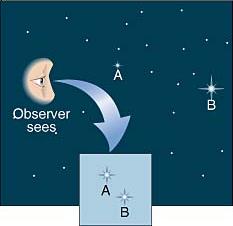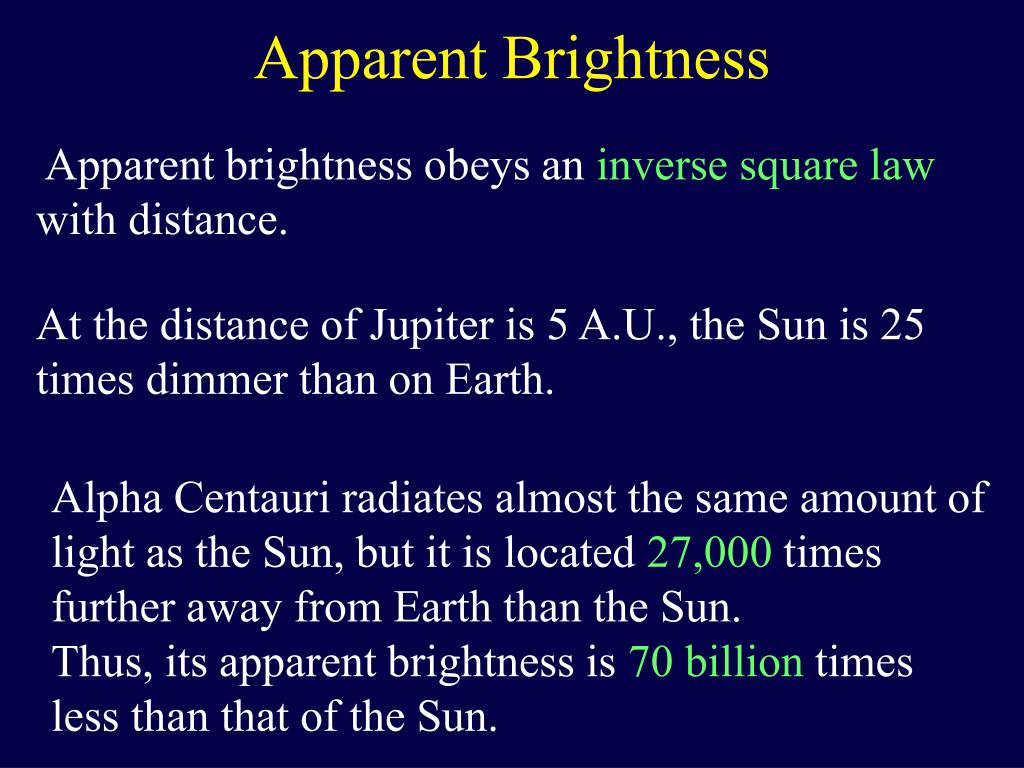
Elizabeth's on-site reporting includes two human spaceflight launches from Kazakhstan, three space shuttle missions in Florida, and embedded reporting from a simulated Mars mission in Utah. As a proud Trekkie and Canadian, she also tackles topics like diversity, science fiction, astronomy and gaming to help others explore the universe. She was contributing writer for (opens in new tab) for 10 years before that, since 2012. Įlizabeth Howell, Ph.D., is a staff writer in the spaceflight channel since 2022. Follow us on Twitter (opens in new tab) or on Facebook (opens in new tab). (opens in new tab)įollow Elizabeth Howell on Twitter (opens in new tab).

Apparent brightness how to#
NASA also has a helpful guide on how to find good places to stargaze (opens in new tab). To learn more about the brightest stars that are currently visible in the night sky, check out (opens in new tab). He adapted it from Norton's 2000.0 18th edition (Longman Sc & Tech, 1989).) Additional reading and resources (Image credit: Source: Chris Dolan, University of Wisconsin-Madison Department of Astronomy. He adapted it from Norton's 2000.0 18th edition (Longman Sc & Tech, 1989). Source: Chris Dolan, University of Wisconsin-Madison Department of Astronomy. But professionals, studying stars in their context, use another metric called absolute magnitude.
Apparent brightness professional#
Most of us are limited to using binoculars or small telescopes and do not need to perform professional calculations to enjoy our observations. To be sure, it's okay to talk about apparent magnitude when speaking about astronomy on an amateur level. Conversely, an object that appears very faint from Earth, may actually be very bright, but very far away. " However, Venus is really much less bright than stars it is just very close to us. "For example, from Earth the planet Venus appears brighter than any star in the sky. It does not tell us how bright the object is compared to other objects in the universe," Las Cumbres University stated. "The apparent magnitude of an object only tells us how bright an object appears from Earth. Stars or objects that are closer to Earth, but fainter, could appear brighter than far more luminous ones that are far away. Apparent magnitude (or brightness) depends on the location of the observer.ĭifferent observers will come up with a different measurement, depending on their locations and distance from the star. When taking Earth as a reference point, the scale of magnitude fails to account for the true differences in brightness between stars. Some of its stars, including Betelgeuse and Rigel, are among the brightest stars in Earth's night sky. Orion is the brightest and most beautiful of the winter constellations. The constellation of Orion, the hunter sparkles above the Atacama Large Millimeter/submillimeter Array (ALMA) in Chile's Atacama Desert in this image by European Southern Observatory photo ambassador Yuri Beletsky. "Today a pair of 50-millimeter binoculars will show stars of about 9th magnitude, a 6-inch amateur telescope will reach to 13th magnitude, and the Hubble Space Telescope has seen objects as faint as 31st magnitude," Sky & Telescope said (opens in new tab).

Rapidly evolving telescopes quickly allowed astronomers to see dimmer and dimmer objects, and today professional telescopes can be quite sensitive indeed. we may designate as of the seventh magnitude." "Indeed, with the glass you will detect below stars of the sixth magnitude such a crowd of others that escape natural sight that it is hardly believable," he said in Sidereus Nuncius (The Starry Messenger). Writing in 1610, early telescopic observer Galileo Galilei was one of the first recorded observers to talk about the power of telescopic observations he used the telescope to observe craters on the moon and moons circling Jupiter, among other things. The telescope, introduced in the 17th century, revealed far more stars than what the human eye can see. Ptolemy, however, was limited in that he could only look at the brightness of stars with the naked eye. Ptolemy's catalog listed stars from brightest (which he deemed first magnitude) to dimmest (sixth magnitude). (Ptolemy is more famous for creating an Earth-centered model of the universe, based on his interpretation of planetary movements with the naked eye it was largely accepted by the astronomical community up to the invention of the telescope.) Our current-day magnitude scale is based upon one established by the Roman astronomer Claudius Ptolemy, who created a star catalog in the 2nd century CE.


 0 kommentar(er)
0 kommentar(er)
